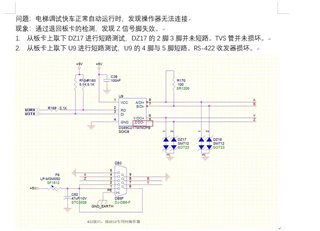Hi team,
I got a question from customer.
"Model: DS89C21TMX NOPB, when debugging, 5 feet were short circuited. The attached circuit diagram is for reference. Please analyze the reason.

Problem: when the elevator runs automatically in express mode, it is found that the operator cannot be connected.
Phenomenon: through board monitoring, it is found that the Z signal pin is invalid.
1. short circuit test was taken DZ17 from on board, DZ17's 2 foot and 3 pin were not short circuited, and the TVS tube was not damaged.
2. short circuit test is taken U9 from on board, U9's 4 pin and 5 pin are short circuited, and RS-422 transceiver is damaged.
"
Thank you very much for your help.
Best regards,

